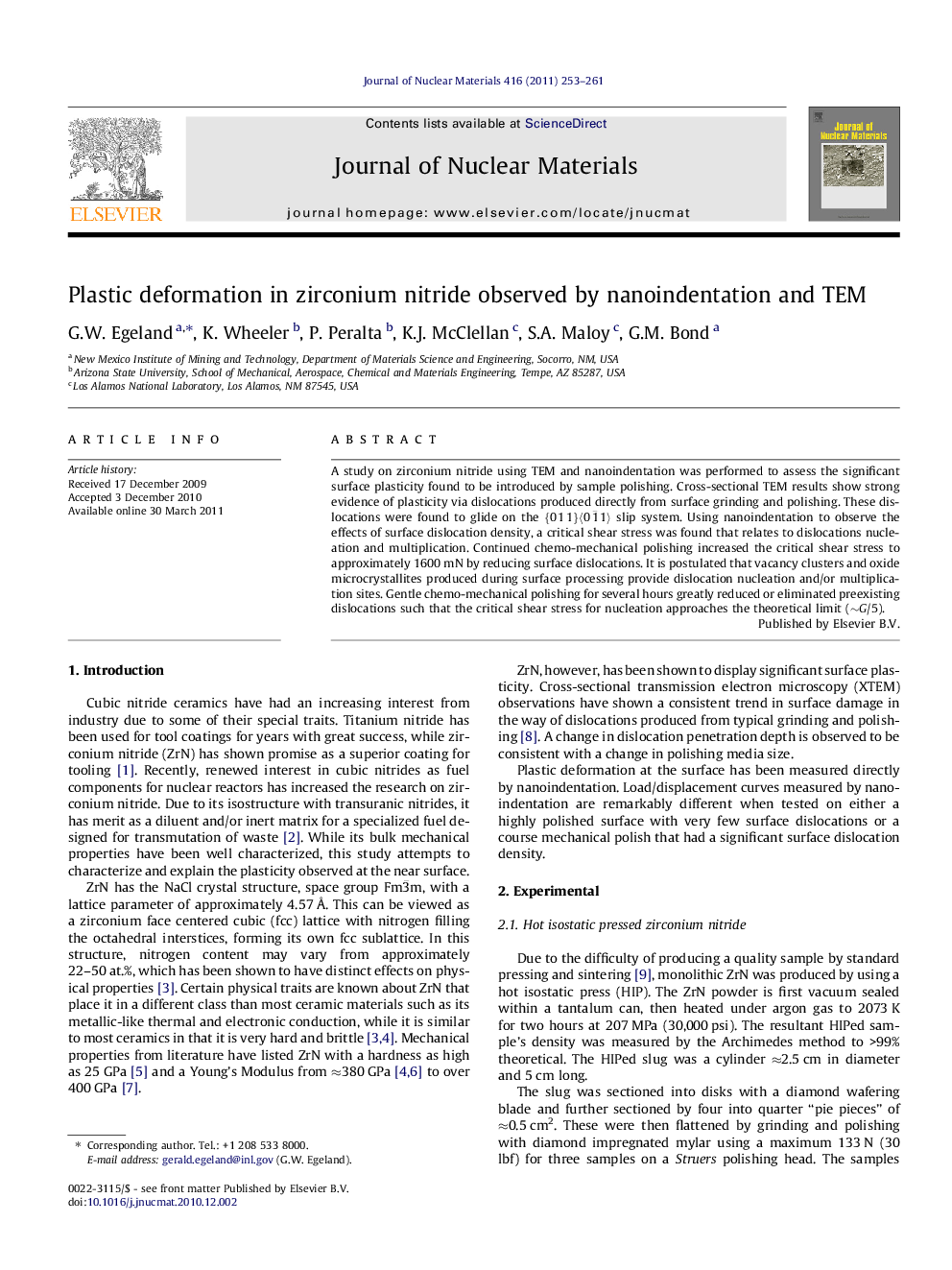| Article ID | Journal | Published Year | Pages | File Type |
|---|---|---|---|---|
| 1566761 | Journal of Nuclear Materials | 2011 | 9 Pages |
A study on zirconium nitride using TEM and nanoindentation was performed to assess the significant surface plasticity found to be introduced by sample polishing. Cross-sectional TEM results show strong evidence of plasticity via dislocations produced directly from surface grinding and polishing. These dislocations were found to glide on the {011}〈01¯1〉 slip system. Using nanoindentation to observe the effects of surface dislocation density, a critical shear stress was found that relates to dislocations nucleation and multiplication. Continued chemo-mechanical polishing increased the critical shear stress to approximately 1600 mN by reducing surface dislocations. It is postulated that vacancy clusters and oxide microcrystallites produced during surface processing provide dislocation nucleation and/or multiplication sites. Gentle chemo-mechanical polishing for several hours greatly reduced or eliminated preexisting dislocations such that the critical shear stress for nucleation approaches the theoretical limit (∼G/5).
